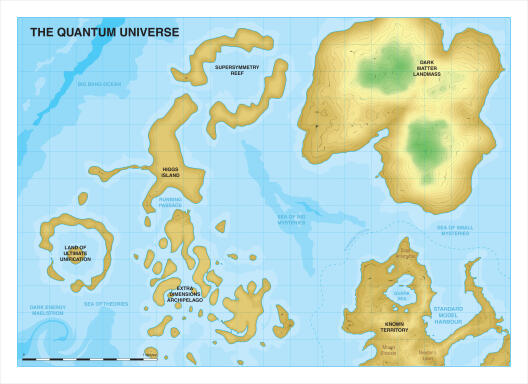
The impressive theoretical insights and experimental discoveries in high energy physics over the past 40 years have merged into an extremely coherent picture, the so-called “Standard Model” of particle physics. These achievements continue to be recognized to this day by numerous Nobel prizes (e. g. ’t Hooft and Veltman 1999; Gross, Politzer and Wilczek 2004; and Nambu, Kobayashi and Maskawa 2008). At the same time, it is widely accepted today that the Standard Model can only be an effective theory, since it leaves open many important physical questions, as e. g.: What are the truly fundamental particles, forces and symmetries in Nature? How was our universe born, and how did it evolve into its present-day state?
Many models for physics beyond the Standard Model have already been and are still being proposed. Often, they are inspired by string theory, a promising, finite theory, which includes gravity, allows for a Grand Unified Theory of the three gauge interactions, requires a supersymmetry of fermions and bosons and predicts (at least) six additional spatial dimensions of microscopic size.
First experimental hints of new physics have recently been discovered in indirect measurements at low energies and in astrophysical observations. For example, neither the measured anomalous magnetic moment of the muon nor the observed neutrino oscillations, which are induced by surprisingly small, but non-vanishing masses, nor the existence of cold dark matter and dark energy in the universe can be explained in the framework of the Standard Model. Precise experimental hints can, however, only be obtained from the direct observation of new particles and symmetries in the controlled environment of a high energy collider, since indirect measurements usually allow for several theoretical interpretations and astrophysical observations are often diluted by the propagation of the signal through insufficiently known cosmic environments. Over the last ten years, Europe and the rest of the world have invested an enormous sum into the Large Hadron Collider at CERN in order to investigate for the first time the TeV energy scale. This investment must evidently be exploited in the best possible way.

